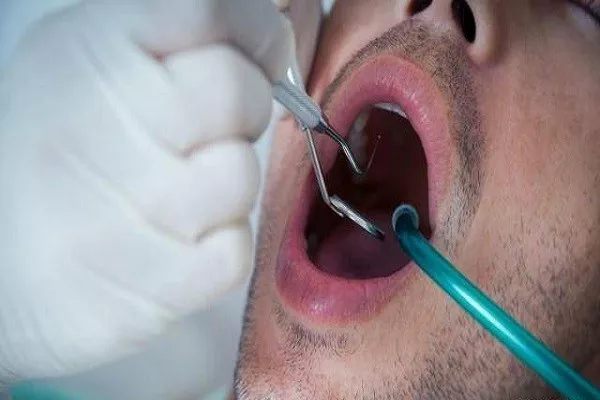A bright, dazzling smile is often associated with confidence and good oral hygiene. Teeth whitening strips have gained immense popularity as a convenient and effective way to enhance the whiteness of your teeth at home. However, one common question that arises is, “How often should I use my whitening strips?” In this article, we will explore the factors that influence the frequency of whitening strip use, best practices for achieving the desired results, and important considerations for maintaining a healthy smile throughout the process.
Understanding Teeth Whitening Strips
Teeth whitening strips are thin, flexible pieces of plastic coated with a peroxide-based whitening gel. These strips adhere to the surface of your teeth, allowing the whitening agent to work on removing surface stains and discoloration. When used as directed, they can help you achieve a whiter and more radiant smile.
Factors Influencing the Frequency of Use
The frequency with which you should use teeth whitening strips can vary based on several factors:
Whitening Product: Different whitening products have varying concentrations of whitening agents. Some products are designed for daily use, while others are intended for less frequent application. Always follow the instructions provided with your chosen product.
Extent of Staining: The degree of staining or discoloration on your teeth can influence the frequency of use. If your teeth have severe stains, you may initially need to use whitening strips more often to achieve your desired results.
Sensitivity: Tooth sensitivity is a common side effect of teeth whitening. If you experience sensitivity, you may need to space out your whitening sessions or use a milder product to reduce discomfort.
Oral Health: The condition of your oral health plays a role. If you have underlying dental issues or untreated cavities, it’s crucial to address those concerns with your dentist before starting any whitening regimen.
Diet and Lifestyle: Your dietary choices and lifestyle habits can impact the frequency of whitening strip use. Consuming staining foods and beverages, such as coffee, tea, red wine, or tobacco, may require more frequent touch-ups.
Best Practices for Using Whitening Strips
To achieve the best results while using teeth whitening strips, consider the following best practices:
Read and Follow Instructions: Carefully read and adhere to the instructions provided with your whitening strips. These guidelines will specify the recommended frequency, duration, and application process.
Choose the Right Product: Select a whitening product that aligns with your goals and sensitivity level. Consult with your dentist if you’re unsure about which product is best for you.
Start Slowly: If you’re new to teeth whitening or have sensitive teeth, consider starting with a lower concentration or using the strips less frequently. You can gradually increase the frequency as your tolerance builds.
Monitor Sensitivity: Pay attention to any tooth sensitivity or discomfort during and after whitening. If sensitivity becomes uncomfortable, reduce the frequency of use or discontinue the product temporarily.
Maintain Good Oral Hygiene: Continue your regular oral hygiene routine while using whitening strips. Brush, floss, and visit your dentist for check-ups to ensure your teeth and gums remain healthy.
Limit Staining Foods: Be mindful of your consumption of foods and beverages known to stain teeth while using whitening strips. Reducing exposure to these substances can help maintain your results.
Follow-up as Needed: After achieving your desired level of whiteness, use the whitening strips as maintenance as needed. This may involve touch-up sessions every few weeks or months to keep your smile bright.
Important Considerations
While teeth whitening strips can be an effective and convenient way to enhance your smile, it’s essential to strike a balance between achieving your desired results and maintaining the health of your teeth:
Consult Your Dentist: Before starting any teeth whitening regimen, consult with your dentist. They can evaluate your oral health, address any underlying issues, and provide personalized recommendations for whitening.
Avoid Overuse: Excessive or prolonged use of whitening strips can lead to tooth sensitivity and damage to the enamel. Follow the recommended guidelines provided with your product.
Be Realistic: Understand that teeth whitening may not achieve extreme levels of whiteness, especially if your teeth have deep stains or intrinsic discoloration. Set realistic expectations for the results.
Address Underlying Issues: Teeth whitening is most effective on healthy teeth. If you have dental issues like cavities, gum disease, or enamel erosion, address these concerns with your dentist before whitening.
Conclusion
The frequency of using teeth whitening strips depends on various factors, including the product you choose, the extent of staining, your tooth sensitivity, and your oral health. Always follow the instructions provided with your whitening strips and consult with your dentist for personalized recommendations.
Maintaining good oral hygiene, being mindful of staining foods and beverages, and monitoring tooth sensitivity are essential aspects of using whitening strips effectively. By striking the right balance between achieving your desired results and preserving the health of your smile, you can enjoy a brighter and more confident appearance.
Related Topics:





























